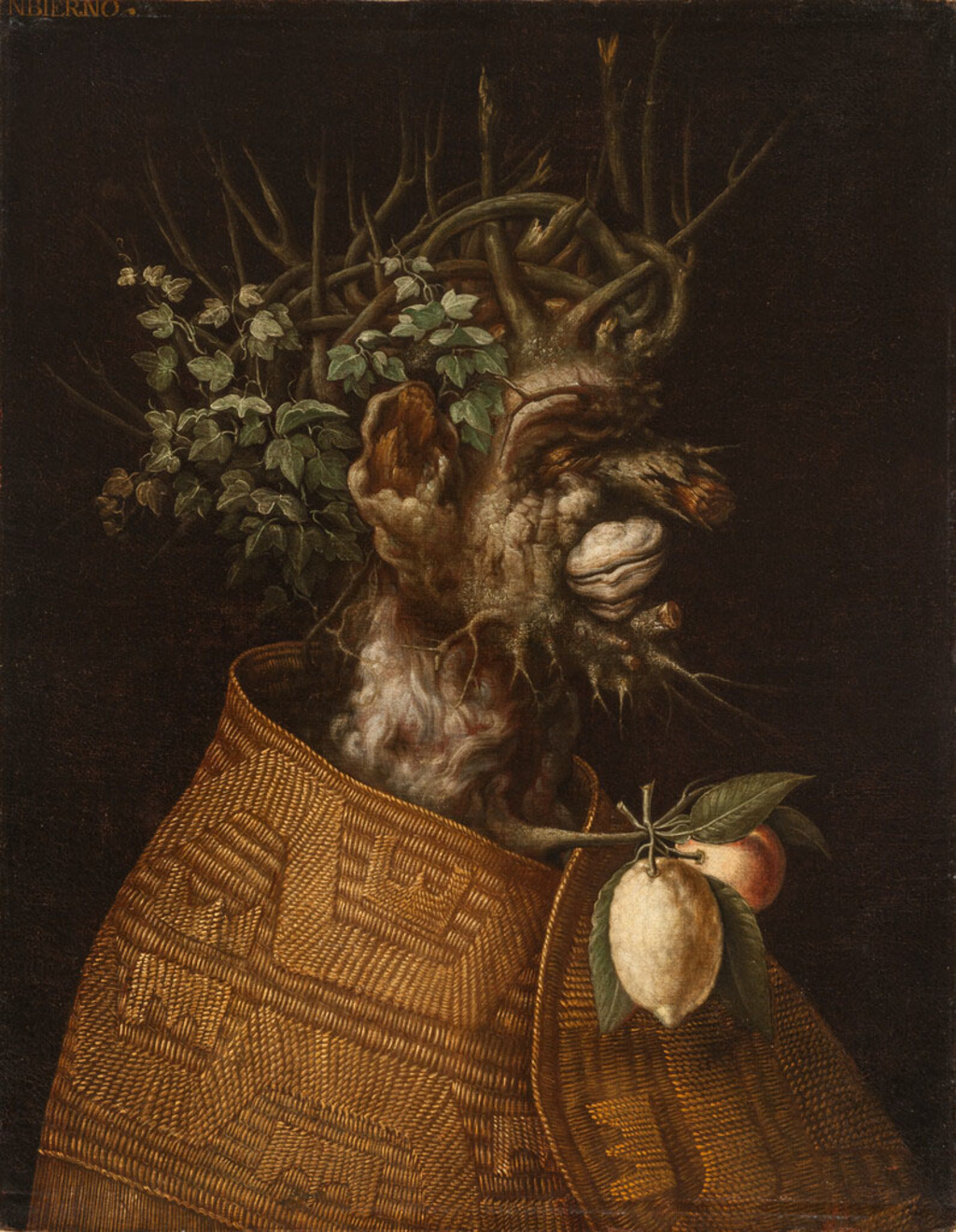Winter shows a personification of the season created through a clever arrangement of natural and manmade objects associated with that time of year. A tree stump grows into the head of a man, his advanced age suggested by the gray, gnarled bark that forms his sagging skin. Broken off branches shape his nose and ear; a mushroom becomes his mouth; and roots define his chin and jawline. Barren, leafless limbs sculpt his hairstyle, which is crowned with ivy vines. A woven mat provides protection from the cold, while a sprig of citrus fruits offers a hint of warmth and new life amongst the canvas’s chilly assemblage. This inventive, playful composition is attributed to Giuseppe Arcimboldi (also spelled Arcimboldo), a Milanese-born painter who became the official portraitist for the powerful Hapsburg court in Vienna, and later in Prague, in the mid-16th century.
It is believed that Arcimboldi first experimented with these “composite heads” in 1562, completing the Four Seasons series the following year (these are preserved in the collection of the Kunsthistorisches Museum, Vienna). He then embarked on a parallel series, the Four Elements, that personify air, fire, earth, and water, with appropriate animals and objects. In all of these paintings, Arcimboldi worked from highly detailed and accurate studies of animals and plants that he had observed firsthand. The artist officially presented the two complete original series to the Holy Roman Emperor Maximilian II on New Year’s Day 1569. Poems by Giovanni Battista Fonteo accompanied their presentation and elucidated the complex allegorical meaning embedded in the paintings, which were intended to communicate the all-encompassing reign of the Hapsburg family. Per the interpretation established by Fonteo, the dynasty’s rule extended over all of the world (the four elements) and for all time (the four seasons).
The paintings were an immediate sensation and were widely imitated and frequently copied by followers. In 1573 Arcimboldi himself completed a variation of the Seasons as an imperial gift to Elector August of Saxony (now at the Louvre, Paris). The inscription at the top of the Menil’s painting “Inbierno” (winter in Spanish) suggests that it may have been completed by Arcimboldi as gift for Philip II, the Hapsburg King of Spain (and Maximilian II’s cousin), but this has not been definitively proven.

